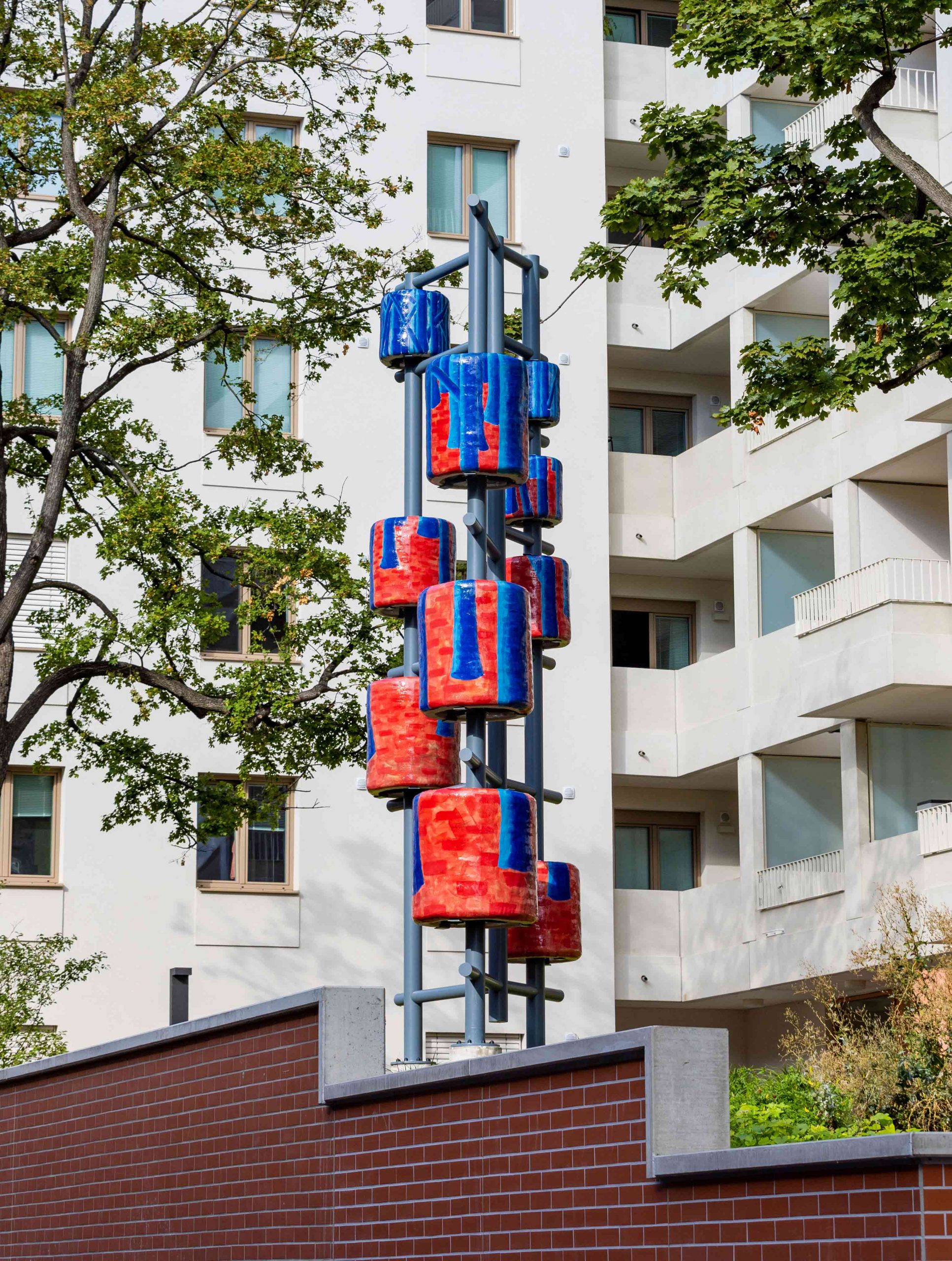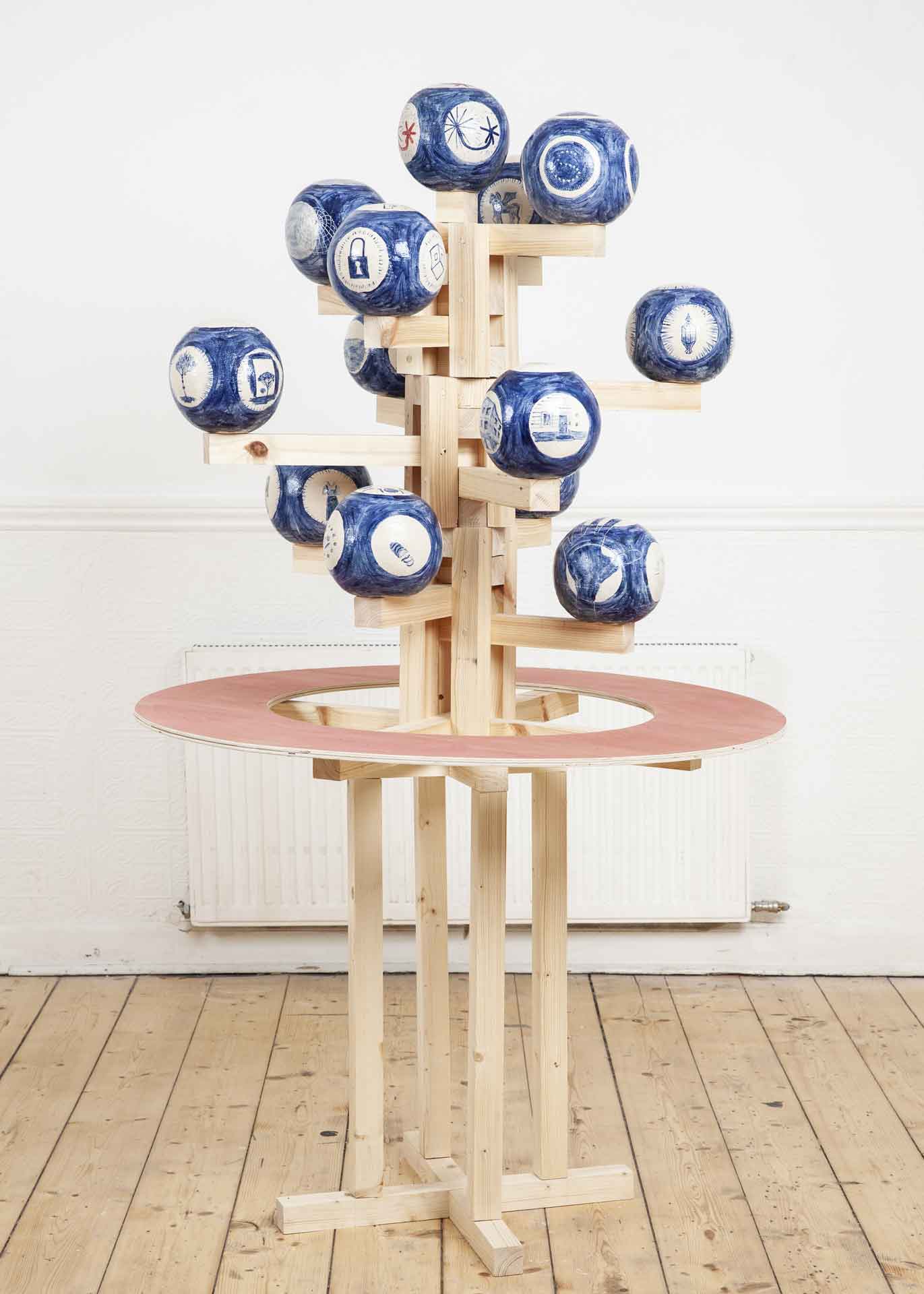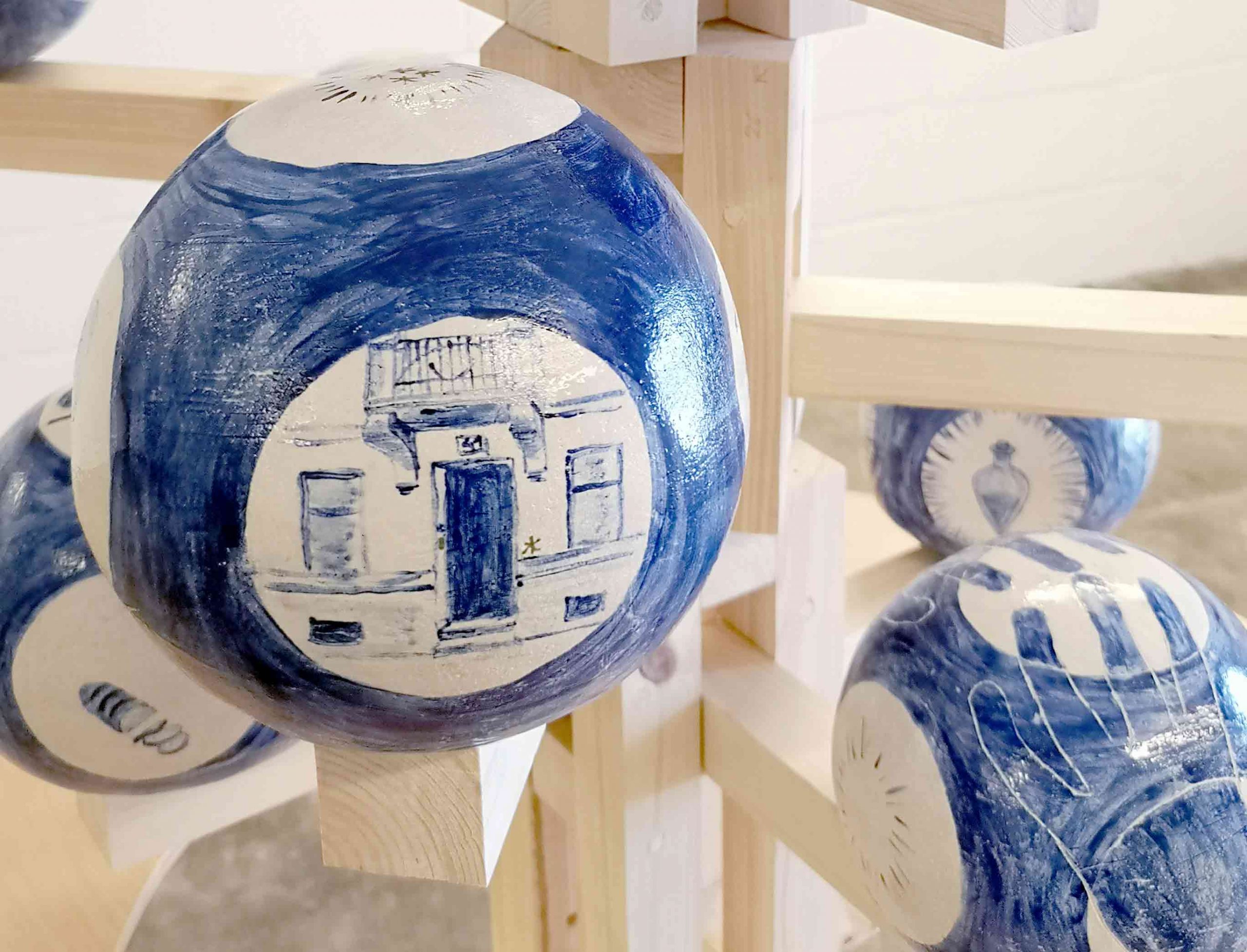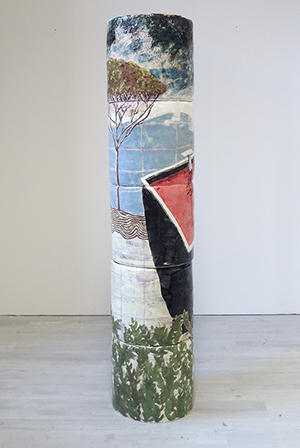We return with an interview with Oktavia Schreiner, known to Scottish audiences for her painted ceramics which have been exhibited at Intermedia Gallery , 16 Nicholson Street and Kiosk Gallery, all in Glasgow, as well as Generator Projects in Dundee. Oktavia has also exhibited in the United States, at Mana Contemporary in Jersey City. Of Course she has shown in her home country, recently premiering a large public commission in Austria. We spoke a bit about the process and context of Oktavia’s work.
Butterbiggens:
How did your Process change with the increase in scale with the piece you presented in Austria, The Bigger Forest?
Oktavia: Yes, der größere Wald (the bigger forest) is my largest piece so far and it is my first permanent public art work. It is almost 6 meters high and I used one ton of clay to make it. It does make quite a difference because I had to plan the sculpture completely beforehand. I was working with the steel company STAHL UND FORM in Vienna and we made a 3D Model beforehand. The painting changed on a large scale as well of course as I had to think about people seeing the piece from 100 meters distance and from close up, just standing underneath it. I knew beforehand that I would paint tree trunks on the columns to refer to the forest who used to be there, but I was a bit more free with the painting to make decisions right there when I had the sculptures in front of me. The difficulty with this piece was that I had to paint the sections individually as the drying, painting, glazing and firing process and time restraints required to work in shifts. But I think these restraints can sometimes add to the charm of a piece. Not having full control can be a good thing.

—
I think it is important to spend quite some time at the place where the sculpture will be placed and really understand the dimensions and the architecture around it. See it in different lights as well. I brought glazing tests to the locations and a ruler and just spent hours there.
BB: you must have developed some kind of relationship to the people in the apartments around it?
Oktavia: Yes, there was a couple opposite who were at the window the whole day. I don`t think it was particularly because of me. They just really liked looking out of the window. I never had a chance to talk to them though. The building behind the sculpture was just built when I developed my work, so no one lived in them yet. I am planning to go there again next week and see it more alive. There is a new build behind the sculpture but also a building that is probably a 100 years old opposite. I love that you can experience the piece with both backgrounds.

BB: Especially with the piece on the invention of religion, there is kind of a chronological presentation of the images in glaze, maybe a bit like a themed collections of glasses?
Oktavia: yes, this piece does a bit more storytelling. what do you mean with collections of glasses?
BB: well the narrative isn’t presented in a strictly linear or chronological fashion, the order you view them in depends on where you approach the “tree” in the gallery
Oktavia: That’s the nice thing about sculpture. you can’t read it from left to right. I can make quite specific drawings but as it is part of a bigger sculpture it loses some of its narrative and I hope it makes it more open. The viewer has a lot of options to engage with it.

BB: In your work the representational or figurative element is mostly contained within the painting or glaze, and then that is contextualized in sculpture, so there is kind of a flattering of time?
Oktavia: Flattering time. Especially because the process of making it is a long one. With ceramics there is a lot of planning involved. It has a certain rhythm. If you paint with slip for example you have to finish the painting before the clay has dried out. So there is a time constraint.

BB: I was wondering if there is anyone you think is due for a critical reassessment? an artist you’d describe as underrated?
Oktavia: Oh, there are many. There are all these artists out there who make art passionately but never get to show it or never make any money from it. It is quite dark but also it is incredible that the artist’s drive to create is so strong. I’d like to think I would always keep going even when I had no chance to show my work to others or earn an income from it. Of course I hope I don’t have to.
Camilla Vuarenmaa, a Finnish painter. I got to know her while she lived in Glasgow for a couple of years or so.. As far as I can see from afar she has success in Finland, but it is a shame that she never got to show her work properly in Scotland even though she produced a lot of paintings here and lots of local stories went into her work.
Austrian painters Mischa Reska and Dieter Kleinpeter.
Oktavia: The architecture of tenement building and gasometers In Glasgow influenced the wooden structures of some of my work. People are influential. I find the art community very supportive here. Fellow artists and I are sharing our applications and trying to support each other with opportunities. That really helps.

BB: I also wanted to ask if you could think of a guilty pleasure, something that you love but think is stupid.
Oktavia: Do you know the poem from Pam Ayres “I wish I`d looked after my teeth” That will be me as I have quite a sweet tooth Also I love watching “the great pottery throw down’. But it is a bit awkward to admit that because the Program is really about participants who do pottery as a hobby. Especially with ceramic there is a hobby craft connotation to it anyway and in the fine arts there is often a need to distinguish oneself from that. But also I’m not too fussed about it. I think the programme is brilliant and I love watching the enthusiasm people have for clay.
for more information please visit https://oktaviaschreiner.com. or on instagram
Interview by Benjamin Duax

